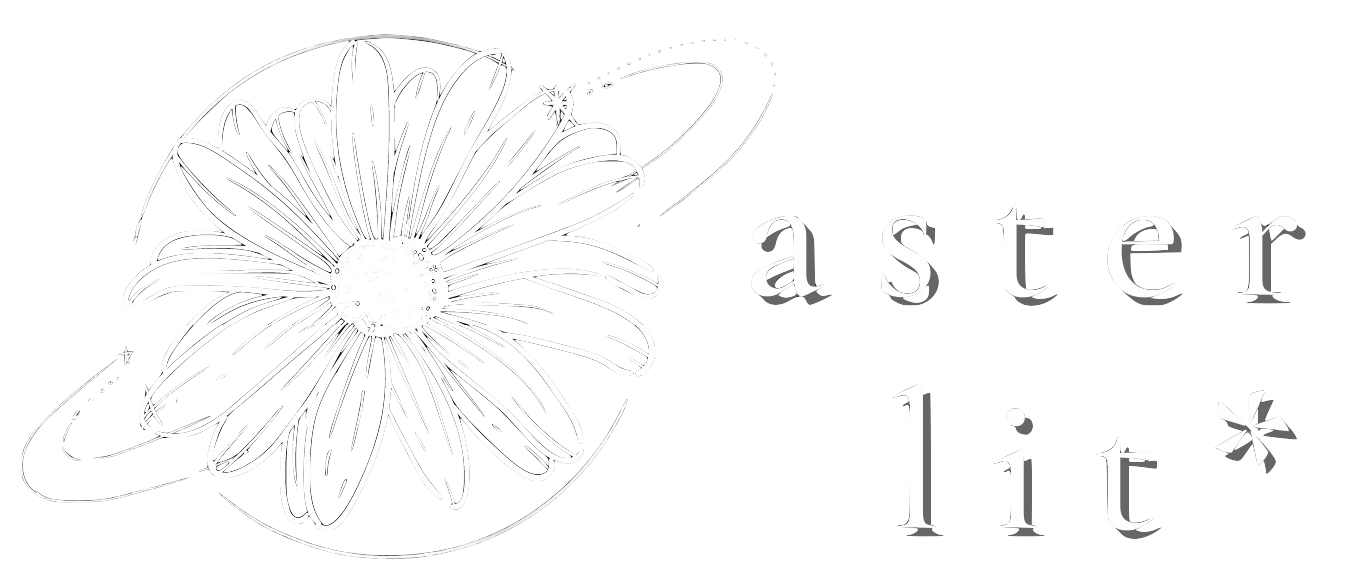
Aster Lit: translatability
Issue 12- Summer 2024
Emails with Victoria Chang
by Celina Simone
Note to the reader: This interview was conducted over a series of emails from July 15th to September 10th, 2024. I have always loved Victoria Chang’s work because it captured the subtlety of the loss and darkness we all carry within us, through moving between the realms of visual art and the written word. When I learned the issue 12 theme would center around translation, I immediately thought of her work and sent a very fangirly email that led to a series of others, published down below.
Celina Simone: For so many of your poems you draw on art, whether that's Agnes Scott's abstract pieces or Edward Hopper's realism. What drew you to ekphrasis?
Victoria Chang: I enjoy looking at things. I think looking at things provokes new thinking and thought, new feelings. I think reading is similar. I tend to be a visual person and started out drawing and painting, while also writing poems.
Celina Simone: Can you describe the process of turning a piece of art you view into a poem?
Victoria Chang: A piece of art or a body of art needs to move me in some way. I always think that going to museums or looking at art isn't about viewing art that everyone else likes or what pieces someone else has deemed "good" art, but rather what catches an individual's eye or what a viewer remembers. That's the most important thing, I think—the art needs to resonate with me before I even start writing. After that, I just start writing—whatever I think about just goes into the poem. It doesn't even have to relate to the artwork anymore if the poem asks to lean away from the artwork.
Celina Simone: How do you think the process of moving from painting to writing compares to translation? Do the two processes feel like different languages, to you, or are they just extensions of each other?
Victoria Chang: I think ekphrastic poems can be about translating, but I think of more like responding/corresponding to/with the artwork versus translating. There are slippages and differences between a piece of visual art and writing that reacts to that art in the same way there are slippages in translation from one language to another (e.g. Nineteen Ways of Looking at Wang Wei, is a great example).
Celina Simone: I love the idea of painting and arts in conversation with writing. Do you ever worry that niche or culturally-informed details will be lost on your readers? Or is the ultimate goal to expose them to things outside of their realm of "normal" to start a conversation?
Victoria Chang: Absolutely. But I don't like to explain things to the reader. I think of a poem as an experience versus a data transformation of detail. With this assumption, my poems can start in medias res, refer to obscure paintings, allude to literature, a different language, etc. With my most recent book of poems, I converse with the writings and artwork of Agnes Martin. Many people know Martin's work, but many do not. Some know her writings, but most have not read them. Many love Martin's visual art, but many do not. I mention this as an example because I also intentionally did not show any of the visual art next to the poem because I feel like this limits the poem and the imagination of the reader. I felt like the poem needed to stand alone, without Martin's art. If someone wants to look up the art, they can.
Celina Simone: Do you have any advice for young authors who are beginning to write about their identities or cultural niches that their reader may not understand?
Victoria Chang: I don't really. My mind just doesn't really work like that in terms of thinking about the audience to help them "understand." I don't think that's my job as a writer. I mostly think of myself as the audience—does the work I'm doing make sense to me? Does it challenge me? Is it up to my own standards? Am I pushing the work in new and interesting ways? Am I listening to the work? Do I understand the work and what it seems to want to do? Those are the questions I ask myself. I'm not at all interested in what's in fashion, what's not in fashion, what the reader might want or not want, or understand or not understand.
Victoria Chang’s latest book of poems, With My Back to the World was published in 2024 by Farrar, Straus & Giroux and Corsair Books in the U.K., and was shortlisted for the Forward Prize for Poetry. Her most recent book of poetry, The Trees Witness Everything was published by Copper Canyon Press and Corsair Books in the U.K. in 2022, and was named one of the Best Books of 2022 by the New Yorker and The Guardian.
Her nonfiction book, Dear Memory (Milkweed Editions), was published in 2021 and was named a favorite nonfiction book of 2021 by Electric Literature and Kirkus. OBIT (Copper Canyon Press, 2020), her book of poems, was named a New York Times Notable Book, a Time Must-Read Book, and received the Los Angeles Times Book Prize, the Anisfield-Wolf Book Award in Poetry, and the PEN/Voelcker Award. It was also longlisted for a National Book Award and named a finalist for the National Book Critics Circle Award and the Griffin International Poetry Prize. She has also received a Guggenheim Fellowship and the Chowdhury Prize in Literature. She serves as the Bourne Chair in Poetry at Georgia Tech and as the Director of Poetry@Tech. Her poems have been translated into many languages including Italian, Chinese, Spanish, Romanian, and Dutch.
